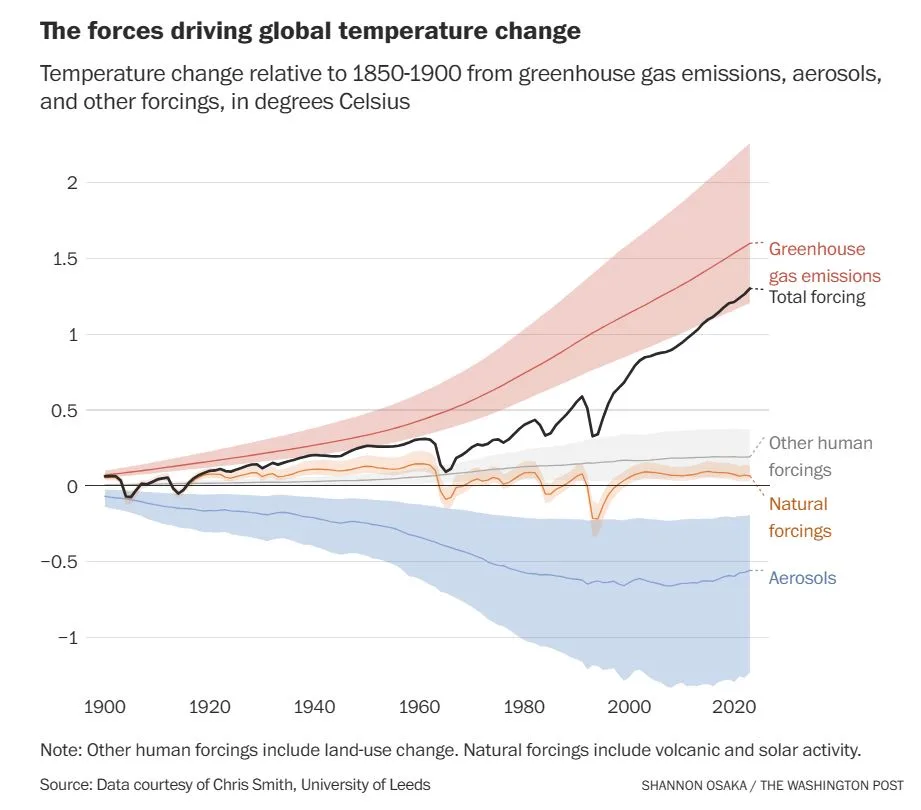Our atmosphere contains a wide variety of aerosols—tiny particles that float around for days, months, or even years. These particles come from volcanoes, sea spray, wildfires, power plants, auto exhaust, and many other sources.
The impact of these particles can be both good and bad. On the good side, aerosols are essential for cloud formation. Light-colored aerosols like volcanic ash, auto exhaust, and wildfire smoke also reflect sunlight and cool our planet. At the same time, darker aerosols like the soot that belches skyward from wildfires and diesel engines can absorb sunlight warm our planet.
Human-made aerosol pollution is also bad for our health and our planet’s health—think blankets of smog that cover our cities, and the hole in our ozone layer caused by CFCs from spray cans and refrigerants—so we’ve made great strides in recent years to reduce these kinds of emissions. While this effort has been essential, it’s also revealed a disturbing truth: that if not for sunlight reflected by aerosols over the last several decades (both the natural and manmade kind), the Earth would about 0.7° F (0.4 °C) warmer than it is today. In a paper published last month in arXiv, lead author James Hansen argues that as we’ve cut back on manmade aerosol emissions, this reduction is starting to cause a new spike in global temperatures. Whereas global average temperatures increased at a rate of about 0.18°C per decade between 1970 and 2010, Hansen and his co-authors predict we’re at the leading edge of a post-2010 warming rate of at least 0.27°C per decade. We haven’t adequately accounted for this threat in our climate policy plans, argues Hansen, which means that we’re going to overshoot our temperature goals sooner than we realize.
In reporting on this paper, the Washington Post noted that not all researchers agree with Hansen’s conclusions that we’re currently at the leading edge of this new spike and that a few more years of data collection are needed. The following chart is from the Washington Post article.

Hansen paper Washington Post
Additional reading:

